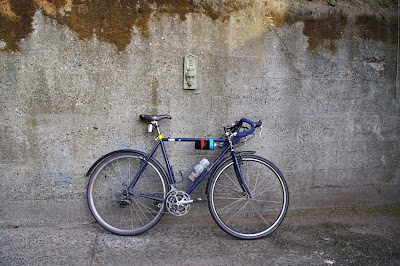I love maps. Nothing launches me into scheming and daydreaming for an adventure like a good map. Maps reveal interesting routes to destinations near and far. They help me plan a bike tour through Canada’s Gulf Islands, plot a backpacking route into Eagle Cap Wilderness, and navigate my way to a mountain onsen in Japan.
Maps are my friends and I am blessed to have an abundance of them. In fact, I confess that I have a dresser drawer full of maps. I have maps that accompany me on urban bike commutes, bike tours, mountain bike rides, snowshoe outings, day hikes, wilderness backpacking trips, ski tours on trails and into untracked terrain, and road trips.
The map is my co-pilot. It suggests route possibilities, warns me of potential obstacles, and guides me through unfamiliar territory. Maps take a licking and keep on ticking—or something like that. I have spilled beverages on maps, dropped them on muddy trails, used them as notepads, and refolded them all sorts of ways. They continue to serve their purpose in spite of the abuse.
Maps—don’t leave home without one. In fact, carry several. I usually stash an extra Seattle bike map or two with me on my commute to hand out to the lost or confused cyclist I occasionally encounter along the way. It’s a not-so-random act of kindness and a way to spread the map love.
“Thanks!” exclaims the grateful cyclist. “I didn’t know Seattle had a bike map.”
Seattle does indeed have a bike map. So does Vancouver, Spokane, and a host of other communities. There’s even a Washington State bike map. Check the maps section of our website for some links.
I’ve been known to select a destination because I saw it on a map. I hiked to Indian Henry’s Hunting Ground and the Plain of Six Glaciers simply because I was attracted to their names on a map. I camped at Kodachrome Basin State Park because, with a name like that, it had to be scenic (I wasn’t disappointed). I biked the Columbia River Gorge because it looked like an interesting route on a map.
Maps can’t tell you everything, but they can reveal enough information to get you scheming on an adventure in your neighborhood or someplace far away. Where has a map led you?



 This 1996 Ibis Mojo is a classic steel hardtail built in Sebastapol, CA from custom drawn Tange Prestige tubing. In 2001 i had a disc brake tab and bracing tube silver soldered onto the frame by Martin Tweedy who was then the Ti Cycles steel frame builder.
This 1996 Ibis Mojo is a classic steel hardtail built in Sebastapol, CA from custom drawn Tange Prestige tubing. In 2001 i had a disc brake tab and bracing tube silver soldered onto the frame by Martin Tweedy who was then the Ti Cycles steel frame builder.  At that time i also updated the parts kit to include Shimano XT drivetrain, Marzocchi Atom 80 coil sprung fork and Hayes disc brakes. As you see in the photo above i am currently running Avid BB7 cable-actuated disc brakes. Of course now it is due in for some new drive train parts, speaking of which...
At that time i also updated the parts kit to include Shimano XT drivetrain, Marzocchi Atom 80 coil sprung fork and Hayes disc brakes. As you see in the photo above i am currently running Avid BB7 cable-actuated disc brakes. Of course now it is due in for some new drive train parts, speaking of which...







